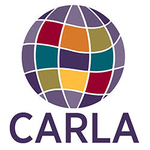In the Absence of Immersion: Creating Culturally Responsive Ecologies through Biography-Driven Instruction
Session Type
Discussion Session (1 hour)
Immersion/Partner Language(s)
not specific language
Context/program model
Two-Way Bilingual Immersion
Level
Middle School/Junior High
High School
Program Summary
Since few Kansan schools have immersion options, we propose biography-driven instruction—a culturally responsive method that promotes differentiated instruction and student-teacher reciprocity—to create a classroom ecology in which code-switching and code-meshing are privileged. Ultimately, we aim to discuss ways to prepare for bilingual immersion in contexts similar to Kansas.
Abstract/Description for Paper, Discussion, and Laptop Poster presentations
During the last decade, the number of English language learners (ELLs) enrolled in public schools has continued to increase nationwide. In the 2012-13 school year, K-12 ELL enrollment stood at 4.85 million students, or approximately 10 percent of nation’s school population. Kansas has traditionally had a modest ELL population, though this has begun to change. Between 2002-2003 and 2012-13, Kansas emerged as the state with the largest ELL growth nationwide at an increase of 4.9 percent. In 2011-2012, Kansas reported enrollment of 41,052 ELLs in K-12 schools equaling 8.5 percent of all Kansan students (Condition of Education, 2015; NCES, 2015).
In Kansas, only five dual language schools exist, all within major cities: Kansas City, Topeka, and Wichita. It is widely acknowledged that two-way bilingual immersion programs best cultivate ELL academic potential. However, when factors such as sociopolitical climate and funding are unfavorable, other pedagogical solutions must be sought.
Therefore, we suggest biography-driven instruction (Herrera, 2016)—a culturally responsive method that promotes differentiated instruction and student-teacher reciprocity—to create a classroom ecology in which code-switching and code-meshing are privileged, resulting in enhanced academic, linguistic, cognitive, and sociocultural student outcomes. We intend to present the benefits of this method while simultaneously opening up discussion for other pedagogical options used in similar geographic and sociopolitical climates.
Given that very few Kansan school districts have immersion options, two key questions emerge:
- How can two-way bilingual immersion programs be initiated in districts with no immersion options?
- In the absence of immersion options, what other instructional methods promote leveraging the learner’s L1/heritage language as a scaffold to improve student outcomes?
Ultimately, we aim to meet other two-way bilingual scholars and practitioners who are equipped with the knowledge and experiences to help district administrators, teachers, parents, students, and communities prepare for such programming.
Lead Presenter/organizer
Shabina Kavimandan, Kansas State University
Role/Title
Instructor and Title II Coordinator
State (in US) or Country
KS
Co-Presenters
Glenda Leung, Kansas State University
Role/Title
Editor
State (in US) or Country
KS
